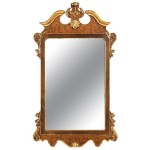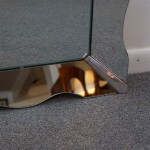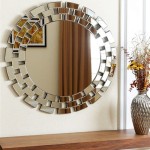Installing a Lighted Bathroom Mirror: A Comprehensive Guide
Lighted bathroom mirrors have become increasingly popular in modern homes, offering a blend of functionality and aesthetic appeal. They provide enhanced illumination for tasks such as shaving, applying makeup, and general grooming, while also adding a touch of sophistication to the bathroom decor. This article provides a detailed guide to installing a lighted bathroom mirror, covering essential considerations, preparation steps, and the installation process itself.
Before embarking on the installation process, it is crucial to understand the different types of lighted bathroom mirrors available. These mirrors vary in design, lighting technology, and mounting options. Some common types include LED-backlit mirrors, mirrors with integrated side lighting, and smart mirrors with customizable lighting features. The choice of mirror will influence the installation process and electrical requirements.
Key Point 1: Planning and Preparation
Thorough planning and preparation are essential for a successful lighted bathroom mirror installation. This phase involves assessing the existing electrical infrastructure, determining the optimal mirror placement, and gathering the necessary tools and materials.
Electrical Assessment: The first step is to examine the existing electrical setup in the bathroom. Determine if there is an existing electrical outlet near the desired mirror location. If not, a new outlet may need to be installed by a qualified electrician. Ensure the circuit is properly grounded and can handle the electrical load of the lighted mirror. Consult local electrical codes and regulations to ensure compliance with safety standards. If you are unsure about any electrical aspects, seek professional assistance.
Mirror Placement: The placement of the lighted mirror should be carefully considered based on the bathroom layout, available space, and desired functionality. The height of the mirror should be appropriate for the primary users, typically positioned so that the center of the mirror is at eye level. Ensure there is adequate clearance around the mirror for comfortable use. Take into account factors such as natural light sources and the proximity of other fixtures, such as sinks and cabinets. Precise measurements should be taken to ensure the mirror fits the intended space.
Tools and Materials: Gather all the necessary tools and materials before starting the installation. Essential tools include a stud finder, level, drill with appropriate drill bits, screwdriver set, wire strippers, wire connectors, and measuring tape. Materials include the lighted mirror, mounting hardware (typically provided with the mirror), electrical wiring, and any necessary junction boxes or conduit. Check the manufacturer's instructions for the specific tools and materials required for your chosen mirror model.
Safety Precautions: Prioritize safety throughout the installation process. Turn off the power to the circuit that will be used for the lighted mirror at the circuit breaker. Test the circuit with a voltage tester to confirm that the power is off. Wear safety glasses to protect your eyes from debris. If working with electrical wiring, use insulated tools. If unsure about any aspect of the electrical work, consult a qualified electrician.
Key Point 2: Installation Process
The installation process involves mounting the mirror to the wall, connecting the electrical wiring, and testing the functionality of the mirror. The specific steps may vary depending on the type of mirror and the manufacturer's instructions, but the following provides a general guideline.
Mounting the Mirror: Use a stud finder to locate wall studs near the desired mirror location. If possible, mount the mirror directly to the studs for maximum stability. If studs are not accessible, use appropriate wall anchors to secure the mirror to the drywall. Mark the mounting locations on the wall using a level to ensure the mirror will be straight. Drill pilot holes at the marked locations and install the mounting hardware according to the manufacturer's instructions. Carefully lift the mirror and attach it to the mounting hardware, ensuring it is securely fastened.
Wiring Connections: Before connecting the electrical wiring, double-check that the power to the circuit is turned off at the circuit breaker. Use wire strippers to expose the ends of the wires from the electrical outlet and the lighted mirror. Connect the wires using wire connectors, matching the black (hot) wire to the black wire, the white (neutral) wire to the white wire, and the green (ground) wire to the ground wire. Ensure the connections are secure and properly insulated. Carefully tuck the wires into the junction box and secure the box to the wall.
Testing the Mirror: Once the wiring connections are complete, turn the power back on at the circuit breaker. Test the lighted mirror to ensure it is functioning properly. Check the lighting levels and any other features of the mirror, such as dimming controls or Bluetooth connectivity. If the mirror does not turn on, double-check the wiring connections and the circuit breaker. If the problem persists, consult a qualified electrician.
Concealing Wiring (If Necessary): In some cases, it may be necessary to conceal the wiring to create a cleaner appearance. This can be done by running the wiring through the wall using conduit or by using a decorative cord cover to conceal the wires on the surface of the wall. Ensure that any wiring is properly insulated and protected from damage.
Key Point 3: Troubleshooting and Adjustments
After installation, it is essential to troubleshoot any issues and make any necessary adjustments to ensure the lighted bathroom mirror is functioning optimally and aesthetically pleasing.
Lighting Issues: If the lighting is not functioning properly, first check the light bulbs or LED strips. Ensure they are properly installed and not damaged. If the lighting is dim or flickering, check the voltage and wiring connections. If the problem persists, the mirror may require repair or replacement. Some lighted mirrors have adjustable light temperatures and brightness levels. Experiment with these settings to find the optimal lighting for your needs.
Mirror Stability: Verify that the mirror is securely mounted to the wall and does not wobble or move. If the mirror is unstable, tighten the mounting hardware or use additional wall anchors. If the wall is damaged, repair it before remounting the mirror.
Adjusting Mirror Angle: Some lighted bathroom mirrors have adjustable angles. Adjust the angle of the mirror to provide the best viewing angle for your height and preferences. Ensure the mirror is securely locked in place after adjustment.
Address Condensation: Bathrooms are often humid environments. Some lighted mirrors come with a defogging feature. Ensure this feature is working properly to prevent condensation from forming on the mirror surface. If your mirror does not have a defogging feature, consider using a de-fogging spray or wiping the mirror with a cloth after showering.
Maintaining the Mirror: Regularly clean the mirror surface with a soft cloth and glass cleaner to remove fingerprints, smudges, and water spots. Avoid using abrasive cleaners or scouring pads, as these can scratch the mirror surface. Check the wiring connections periodically to ensure they are secure and in good condition. If any repairs are needed, consult a qualified electrician.
Installing a lighted bathroom mirror can significantly enhance the functionality and aesthetics of the bathroom. By following these guidelines, it is possible to install a lighted bathroom mirror safely and effectively. Remember to prioritize safety, consult local electrical codes, and seek professional assistance when needed. A properly installed lighted bathroom mirror will provide years of reliable service and enhance the overall ambiance of the bathroom.
Selecting the right type of lighted bathroom mirror is also essential. Consider the size and shape of the bathroom, the existing decor, and personal preferences when making a selection. LED-backlit mirrors provide a soft, ambient light, while mirrors with integrated side lighting offer more direct illumination. Smart mirrors with customizable lighting features can be adjusted to suit different tasks and moods.
The installation of a lighted bathroom mirror presents an opportunity to upgrade the bathroom with both functional and aesthetic enhancements. Adhering to the outlined steps ensures a safe and effective installation, resulting in an improved bathroom experience and an elevated sense of style. Proper maintenance will preserve the mirror's appearance and functionality for years to come.

Diy Led Mirror Installation Personal Tips And Review

Inlight Led Wall Mounted Lighted Vanity Mirror Installation Guide

How Worthy And Important Are Installing Lighted Vanity Mirrors Ledmyplace

The Most Complete Led Bathroom Mirror Installation Instruction Strateg Mirplushome

Best Lighted Bathroom Mirrors To Buy In 2024

How Do I Choose A Lighted Bathroom Mirror Ledmyplace

Halo Bathroom Lighted Mirror Clearlight Designs

Halo Bathroom Lighted Mirror Clearlight Designs

Es Diy 24 In W X 32 H Rectangular Frameless Led Light And Anti Fog Wall Bathroom Vanity Mirror Matte White Hoy1rebm2432vc The Home Depot

Led Lighted Bathroom Round Mirror Easy Installation Anti Fog Wall Mounted Makeup With Lights China Supplier Made In Com








